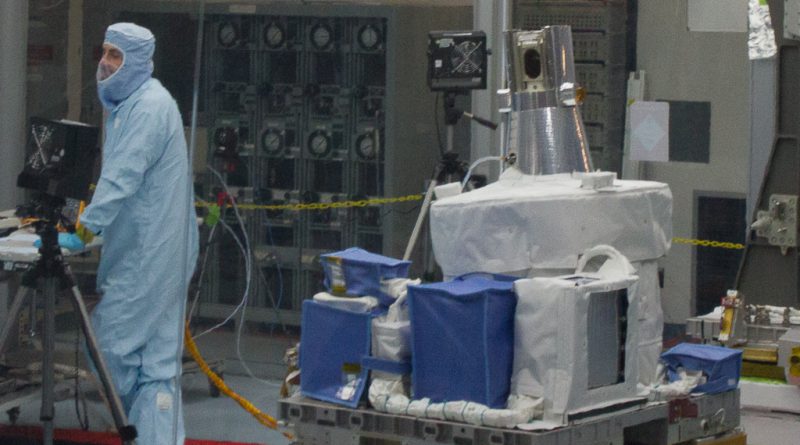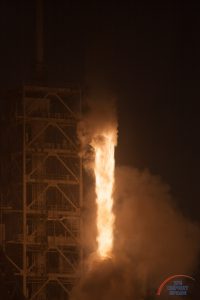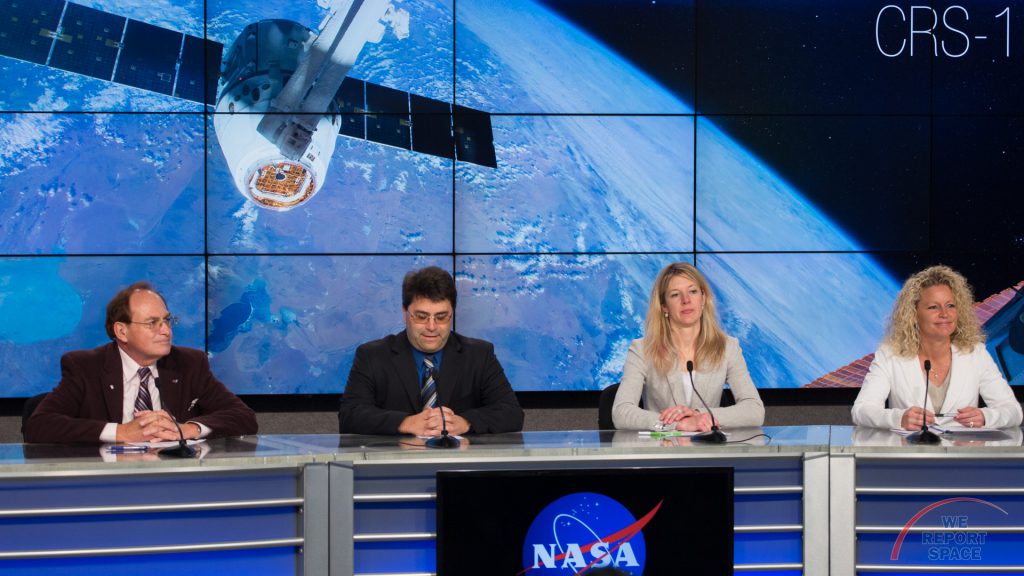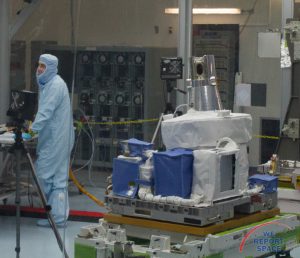SpaceX Dragon Reaches ISS with 35 Science Experiments

KENNEDY SPACE CENTER: As the Dragon Capsule reaches the ISS today, over 1600 pounds of science experiments will arrive at the CSS. "Since the SpaceX Capsule is able to return samples to Earth, the Dragon missions tend to attract a lot of Life Sciences experiments," explained Tara Rutley, Associate Scientist on the ISS team.
Among the experiments on CRS-10

The Mayo Clinic is running an experiment to test rapid Stem Cell reproduction in microgravity. If successful, stem cells could be used to treat victims of stroke. Currently, it can take as many as 200 million stems cells to treat one stroke patient. Using methods on Earth, it would take weeks to generate that many stem cells. Studies in micro-gravity simulators show that stem cells reproduce rapidly in micro-gravity. The Mayo Clinic's Dr. Abba Zubair explains: "We'll gather real-time information about the cells as astronauts conduct experiments measuring molecular changes. We will be looking to see if there are genes activated in microgravity. We may discover proteins or compounds that are produced that we can synthesize on Earth to encourage stem cell growth without microgravity." Dr. Zubair lost his mother to a stroke in 1997. Like many, Dr. Zubair was fascinated by being an astronaut and built a rocket prototype in high school. But, his high school adviser steered him away from space, since it would be a long time before his native Nigeria had a space program.
Merck Research Labs is sending up an experiment to grow crystalline suspensions in space. The benefits of microgravity will allow Merck to grow millions of crystalline particles of uniform size. These can be used to aid future drug delivery, formulation, purification, and storage.
The Army Medical Command and several mice are testing a new drug to help bone healing. When a service member is injured, they often have compound bone injuries that would take over six months to heal. The Army is testing a new drug that can speed the healing and is less likely to cause cancer than the current drug. This drug could also help slow bone loss due to Osteoporosis. The experiment includes several mice with a broken femur. Some mice were treated with the drug, others were not. Similar control mice on Earth will compare healing times on Earth to those in microgravity. In the long term, this knowledge may lead to understanding the biological reasons behind our inability to grow a lost limb despite the fact that the other vertebrates such as Salamander can regenerate a lost limb.
Gene-RADAR from the Nanobiosym company will study super-bug MRSA. Currently MRSA is drug-resistant because it is constantly mutating. There is a theory that MRSA can be made to fast-forward in microgravity. By speeding up future mutations in space and then returning the sample to Earth, pharmaceutical companies can build better drugs to treat those future mutations. When asked about the danger of introducing MRSA to the ISS, Dr. Anita Goel explained: "The MRSA is protected by three levels of containment and should pose no risk to astronauts."
New Equipment Arrives Via CRS-10
SAGE III - is a sensor that will be mounted outside of the ISS to measure the ozone layer. NASA began measuring the atmosphere beginning with the 9-day mission of SAM I on the Apollo-Soyuz test project in July 1975. Later, SAM II flew on the Nimbus-7 spacecraft from 1978-1993. Then, SAGE I launched February 18, 1979 on AEM-B and operated for nearly three years. SAGE II launched on ERBS in 1984 and operated until 2005. SAGE II provided the data showing the improvement in the ozone layer after the Montreal Protocol banned CFCs in 1987. Three identical versions of SAGE III were built. The first was launched on the Russian Meteor-3M spacecraft in 2001. That mission ended in 2006 when the aircraft lost pressure and the electrical system failed. The second SAGE III was planned to fly on the ISS and will resume ozone monitoring after an 11-year gap. Sage III measures the ozone when the Sun or Moon is rising or setting, about 15-16 times per day on the ISS. SAGE III on the ISS will measure ozone during all seasons and over a large portion of the globe.
LIS - a Lightning Imaging Sensor will also be mounted outside of the ISS. The recently-launched GOES-16 mission will be scanning the western hemisphere for lightning strikes. LIS will be orbiting the Earth and can be used to calibrate GOES-16. LIS is a carbon copy of a lightning sensor that scanned the tropics for 17 years on the TRM spacecraft. LIS expands the field of view. Based on observations from TRM, there are about 45 lightning strikes every second on Earth. LIS will collect data used to study the connection between lightning strikes and subsequent severe weather events. LIS is particularly designed to detect lightning strikes during the day using narrow-band, near-infrared sensors.
RAVEN is an autopilot system for berthing spacecraft. This initial unit will monitor spacecraft visiting the ISS. But, the hope is that RAVEN can be used in the future on the Restore-L Satellite Servicer spacecraft. The goal is to have one satellite rendezvous with another satellite already in orbit. This could allow existing satellites to be refueled to extend their mission life.Update 11:00 am February 22, 2017: Dragon's berthing to the International Space Station has been postponed to February 23, 2017, due to a software glitch. Per NASA: "Dragon’s onboard computers triggered the abort after recognizing an incorrect value in navigational data about the location of Dragon relative to the space station."

Stunning, full color photo book covering every east coast launch spanning 2014-2015, including the first-ever powered landing of a SpaceX Falcon 9 rocket.
More Info



